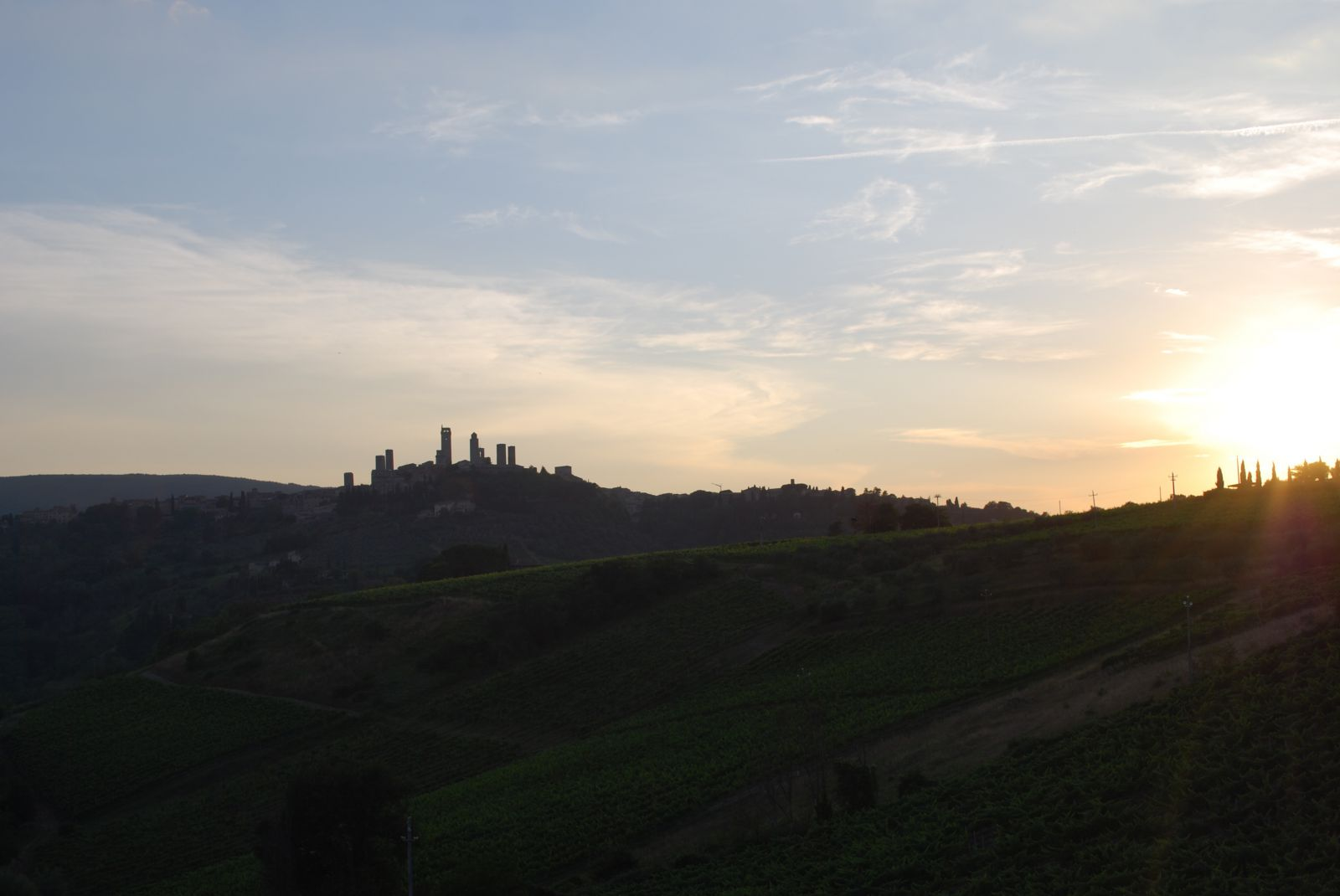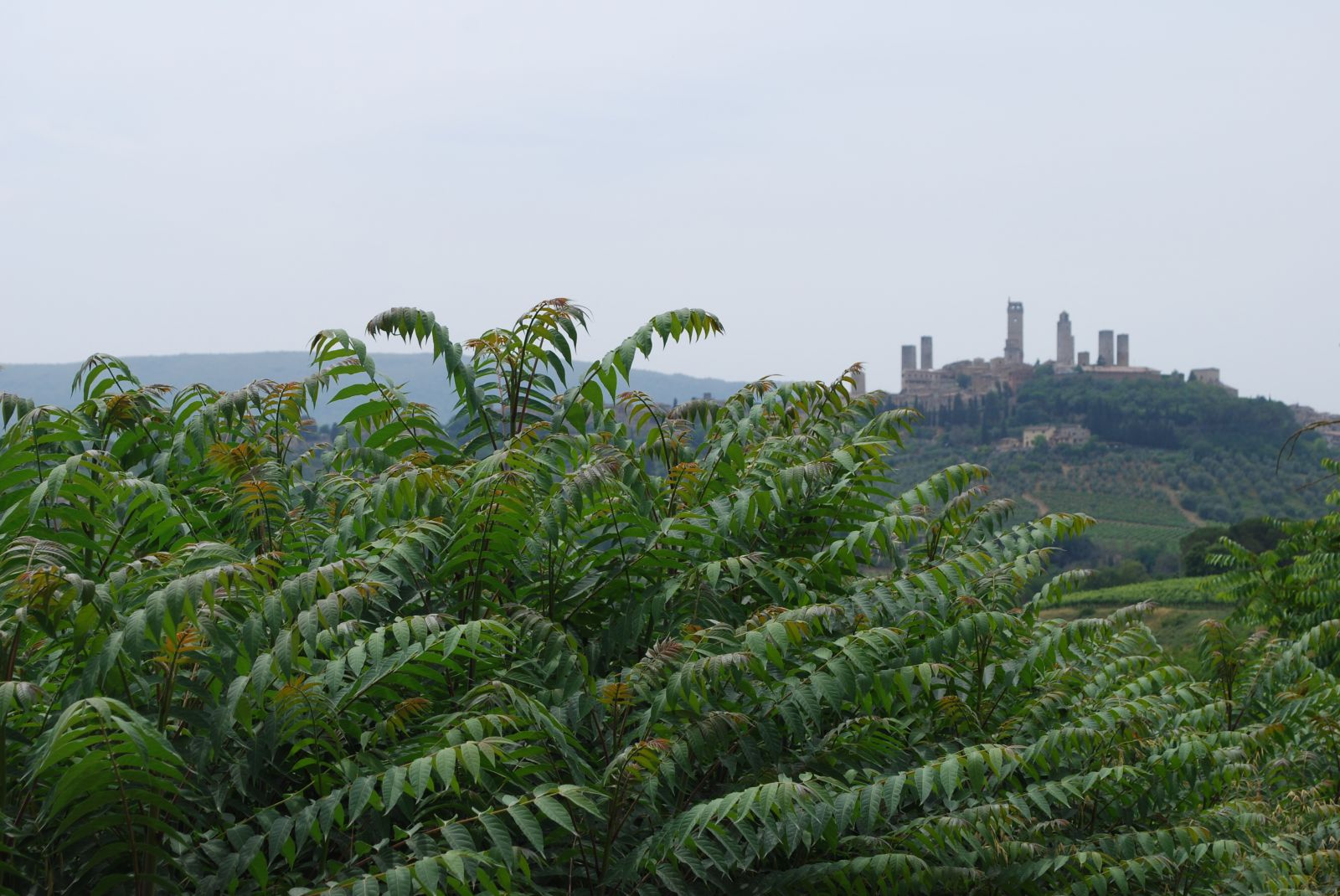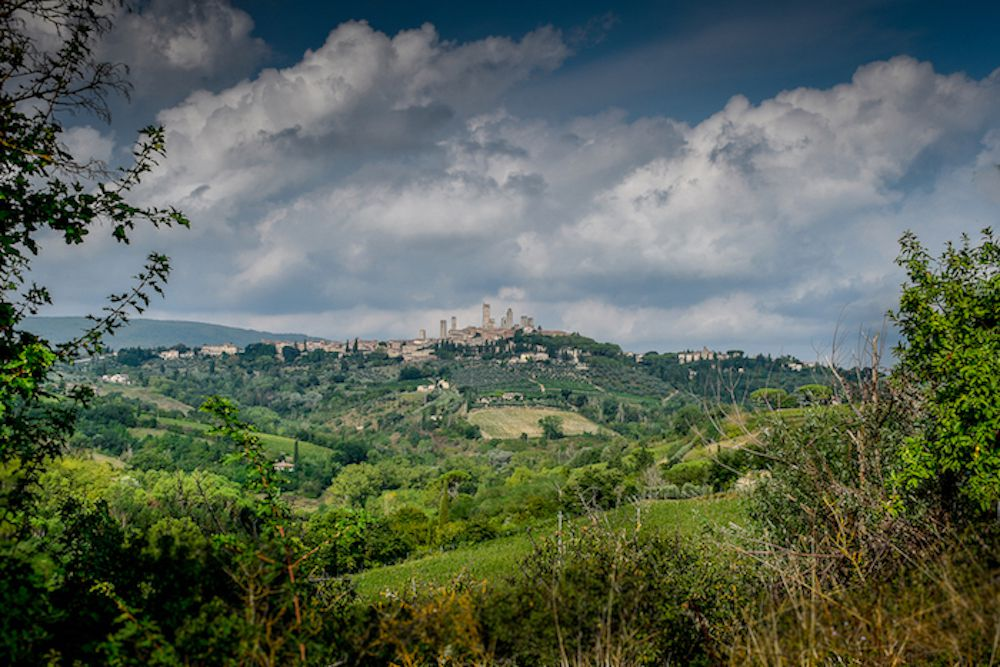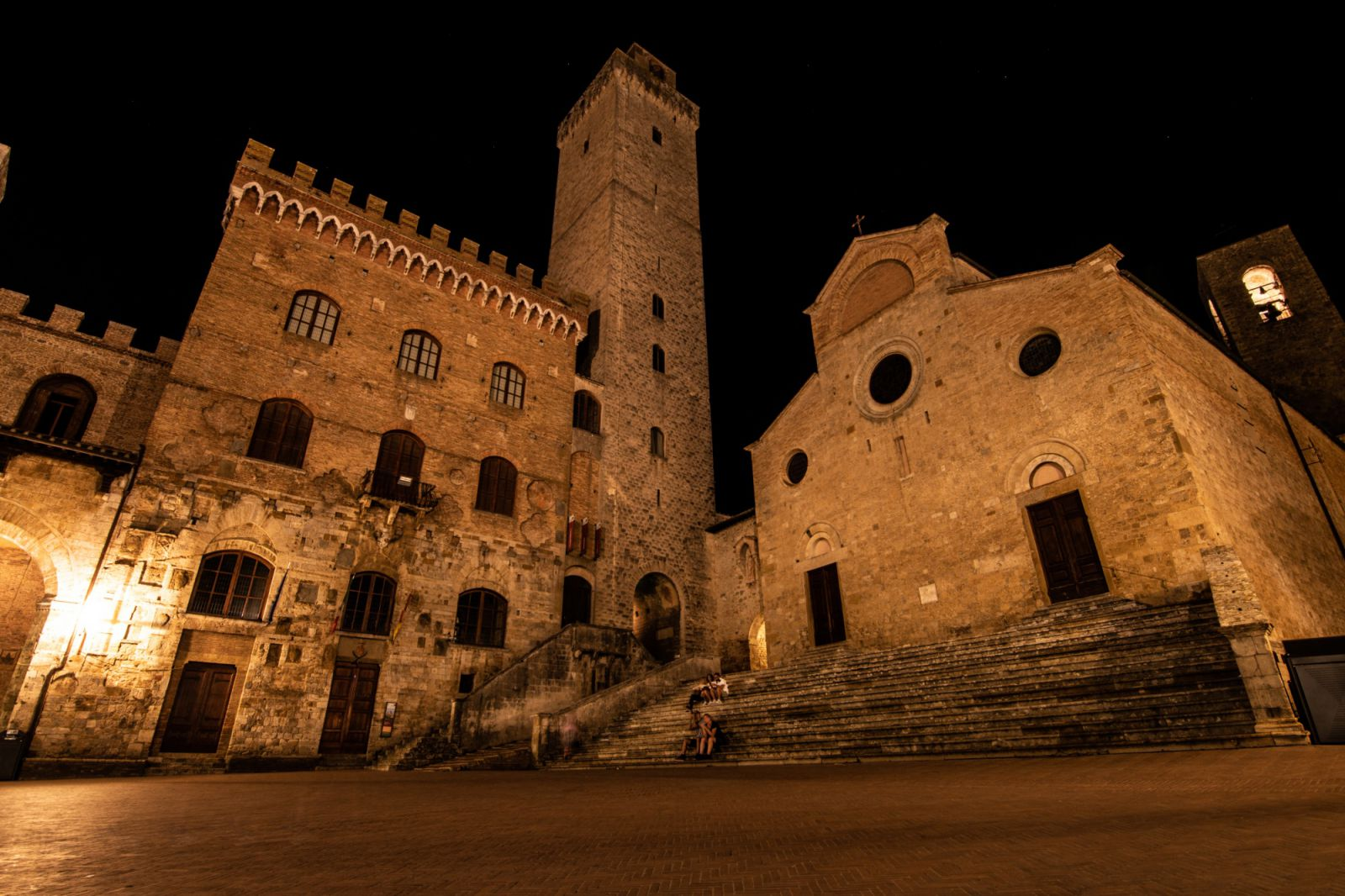
San Gimignano
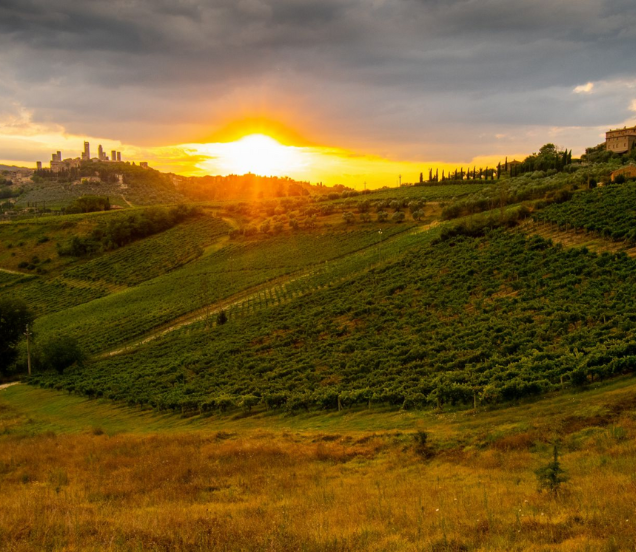
San Gimignano
San Gimignano is located in the province of Siena at 324 meters above sea level and stands on high ground overlooking the Val D'Elsa.
To visit San Gimignano is to be confronted with a town that is considered a medieval museum city; enclosed within its walls, it was an important trading center along the Via Francigena and has preserved its exceptional 13th-century urban and architectural physiognomy. In the Middle Ages it enjoyed a vibrant economy, and the wealth of the city at the time is evidenced by the flourishing of the celebrated Towers, symbols of the affluence of the local merchant class. Today only fourteen remain, compared to the original seventy, to outline the fascinating skyline of San Gimignano.
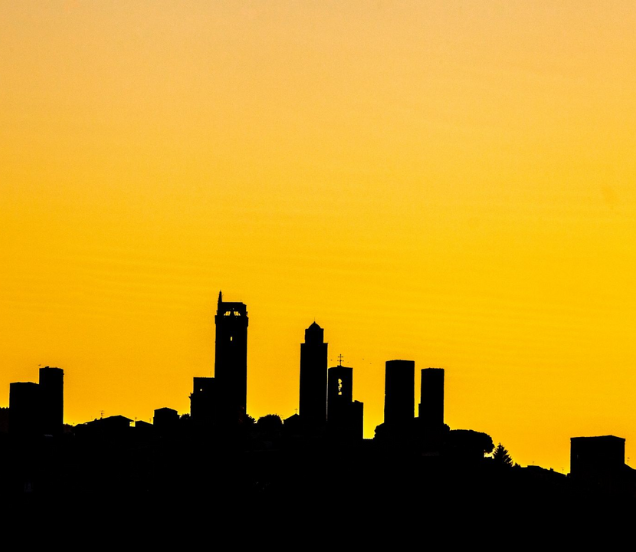
A medieval city
The town is entered through Gothic gates with lowered arches; once inside, you can admire a rich urban and architectural heritage with a characteristic medieval appearance: narrow streets, stairways, churches, thirteenth-century tower-houses, stately mansions, the picturesque Piazza della Cisterna (triangular in plan and with terracotta pavement), the Palazzo del Podestà (13th cent.), the Palazzo del Popolo (13th cent.), and the Collegiata (12th cent.) with frescoes of the Sienese school. In particular, a visit to the cathedral is recommended. Divided into three naves, the Collegiate Church of Santa Maria Assunta preserves several masterpieces on its walls.
On the upper part of the counterfacade is Benozzo Gozzoli's Martyrdom of St. Sebastian while in the central part is Taddeo di Bartolo's extraordinary Last Judgment. Along the right wall are Stories from the New Testament, by Simone Martini's pupils, and on the left are Stories from the Old Testament by Bartolo di Fredi. Next to the cathedral, in the Dormitory of the Chaplains, is the Museum of Sacred Art. The two floors of this small but marvelous museum house paintings, sculptures, bas-reliefs, illuminated manuscripts, textiles and silverware that come from churches and convents in the area. The most valuable are the Madonna of the Rose by Bartolo di Fredi, the large altarpiece by Fra Paolino da Pistoia depicting the Madonna and Child with Saints, and a detached fresco by Benozzo Gozzoli depicting Christ and Saints. In San Gimignano it is possible to trace a long tradition of craftsmanship, characterized by handmade workmanship handed down from father to son; the skill and manual dexterity is still tangible today in a wide variety of products: from wild boar sausages to cheeses, from terracotta to ceramics and leather goods.
Gallery
Stay in San Gimignano
Spending a stay in San Gimignano, in the province of Siena (Tuscany), means choosing a tourist resort that is highly appreciated because of its monumental beauty and more. Its favorable geographical location and temperate climate make it an ideal vacation destination at any time of the year, but the influx of tourists generally concentrates in the warmer and sunnier months, such as June.
Why visit San Gimignano? Medieval architecture and towers.
San Gimignano is renowned for its recognizable medieval architecture, which has a great impact on visitors. Anyone who decides to visit the town cannot help but notice the towers, a symbol of the economic power of the past. Currently there are 13 of them, however it seems that in the 14th century there were as many as 72, one for each wealthy household; tower construction at that time demonstrates one's economic power and even today it is possible to observe how the building has changed over the centuries, taking on different characteristics. The first towers in San Gimignano were characterized by very small interior rooms, usually one meter by two with few openings and a wall thickness of about two meters, such as to ensure coolness in summer and warmth in winter. From the 12th century onward, however, the Pisan model is taken as the reference model, with larger interior spaces and more openings.

Discover San Gimignano
San Gimignano is home to monumental and artistic works of great value in its historic center, including:
- the Collegiate Church of St. Mary of the Assumption built in the 12th century, which houses inside frescoes of the 14th-century Sienese depicting the Stories of the Old Testament by Barna da Siena, Bartolo di Fredi and Taddeo di Bartolo and frescoes of the 15th-century Florentine;
- the Church of St. Augustine, frescoed by Benozzo Bozzoli where there is also a Coronation by Pollaiolo;
- the Palazzo del Podestà, which contains a fresco by Sodomia;
- the Piazza della Cisterna with a triangular plan and terracotta floor, with a beautiful well in the center.
Events in San Gimignano
Ferie delle Messi dei Cavalieri di Santa Fina (third weekend of June)
This is a historical event that takes place in the streets and squares of the center of San Gimignano to celebrate the anniversary of the reaping and harvest. Itinerant groups in costume, from different parts of Tuscany, walk through the streets giving life to a faithful reconstruction of medieval daily life. A large market is set up for the occasion with period stalls and artisans at work intent on making traditional local objects from wood, stone, gold, ceramics and cloth. Performances by storytellers, musicians, acrobats, thespians, magicians and fortune tellers frame the event, while the two most anticipated events take place on Sunday: the historical parade with knights and militia and the knightly tournament with the coveted Golden Sword as the prize.
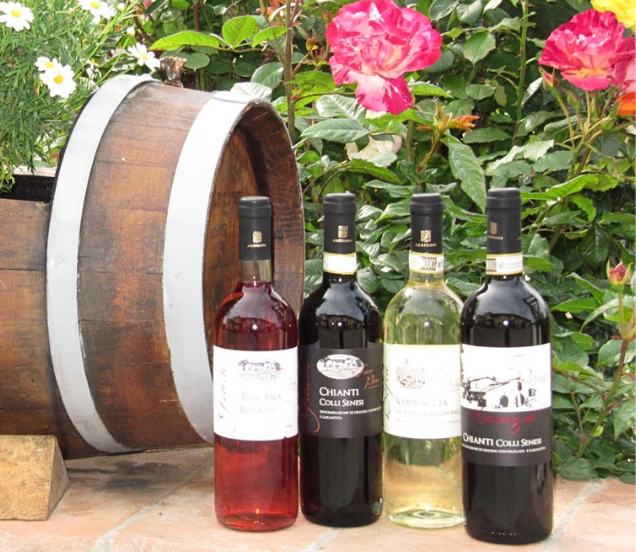
Vernaccia of San Gimignano
Vernaccia di San Gimignano occupies a prestigious position in the panorama of Tuscan wines. This prominence derives from a centuries-old tradition dating back (according to reliable reports) to the mid-13th century, as well as from the objective quality of the product.
A beverage once appreciated by Popes and Princes, over the centuries it has been able to combine the excellent quality of the wine with the unparalleled landscape environment of the San Gimignano area. Few wines in the world, in fact, can boast such a famous "setting."
In 1993, Vernaccia di San Gimignano was granted the DOCG label and was the first Tuscan white wine to obtain it; from that moment on, it has undergone constant evolution both in the vineyard and in the cellar until it has reached levels of great quality and a widely diffused notoriety even on international markets.
Wine tasting, in fact, turns out to be an attraction for a type of food and wine tourism, both in San Gimignano (Siena) and throughout Tuscany.
Source
"Wines of Tuscany: Characteristics of Tuscany's DOCGs and DOCs," edited by the Library of the Tuscan Regional Council, 1999 - See also San Gimignano Appellation Consortium.
Vernaccia of San Gimignano
Vernaccia di San Gimignano is produced exclusively in vineyards located in hilly terrain in the municipality of San Gimignano. The area planted with vines is about 850 hectares, with an average annual production of 45,000 hectoliters of wine. It is important to emphasize the fact that the degree of utilization of Vernaccia is among the highest in Tuscany: about 90 percent of the production potential.
Vernaccia di San Gimignano is made from grapes of the vine of the same name, with the possible presence of other recommended or authorized nonaromatic white grape varieties (up to a maximum of 10 percent). In recent years wineries have made increasing use of these blends, which have ended up further enhancing the base grape variety. In any case, the grape yield per hectare may not exceed 90 quintals.
Vernaccia di San Gimignano has a pale straw yellow color tending to golden with aging; the aroma is fine and penetrating, while the flavor is dry and harmonious with a bitterish aftertaste. The minimum alcohol content is 11° (11.5° for the riserva, after a minimum obligatory aging of one year and an additional four months of bottle aging).
Vernaccia di San Gimignano is a wine considered excellent as an aperitif, excellent with appetizers especially seafood and exquisite when paired with all fish and shellfish dishes, also perfect with white meat dishes. It is recommended to be served fersco, at a temperature of 11-12° C.
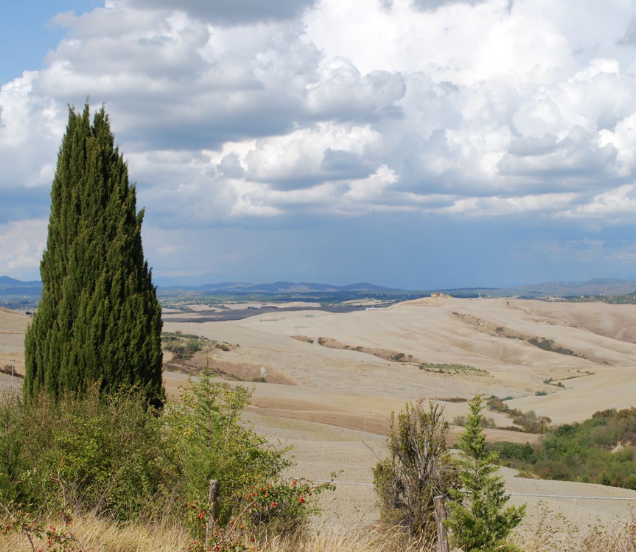
Other wines
The territory of San Gimignano boasts the production of several Denominazione di Origine Controllata and Denominazione di Origine Controllata e Garantita wines with a wide choice of types: red, novello, rosso riserva, rosé, Vin Santo and Vin Santo Occhio di Pernice, as well as the red and rosé Sangiovese specifications (the latter recognized only in August 1996).
The production area is highly suitable for viticulture both because of its geological characteristics and because of the professionalism of the winemakers. Special attention is paid to the ecological and environmental aspect: it turns out that there are very many winemakers who adhere to guided and integrated pest management programs having as their objective respect for the environment and the healthiness of the products.
The wine sector is the most important economic activity for the municipality of San Gimignano in terms of both productivity and employment. The production of wine is also linked to historical and cultural aspects that contribute to making it one of the most valuable in the Region of Tuscany: there are very ancient memories of these wines (the local peasants called the red wine produced "Vino Nero"), not to mention the Vin Santo so named from time immemorial.
The tourist sector also benefits from this type of activity, as wine and food is an important attraction today; the tourist experience is not complete without at least one wine tasting in San Gimignano (Siena) or Tuscany.
Source
"Wines of Tuscany: Characteristics of Tuscany's DOCGs and DOCs," edited by the Library of the Tuscan Regional Council, 1999 - See also San Gimignano Appellation Consortium.
Other wines
The rosso, novello and rosso riserva types are made from Sangiovese (minimum 50 percent) and other red grape varieties up to a maximum of 50 percent; the Sangiovese specification is also provided if the grape variety of the same name accounts for at least 85 percent of the ampelographic base.
The rosé type is made from: Sangiovese (minimum 60 percent), Canaiolo Nero (up to a maximum of 20 percent), Trebbiamo toscano, Malvasia del Chianti and Vernaccia di San Gimignano (up to a maximum of 15 percent), plus other red grape varieties for a maximum of 15 percent; the specification Sangiovese is also provided for rosé.
Vin Santo is made from grapes of Malvasia del Chianti (up to a maximum of 50 percent), Trebbiano Toscano (minimum 30 percent), Vernaccia di San Gimignano (maximum 20 percent) and other vines up to a maximum of 10 percent. Vin Santo Occhio di Pernice is made from Sangiovese (70 to 100 percent), with the possible addition of other red grape varieties.
Maximum grape production per hectare must not exceed 100 quintals for all types.
San Gimignano Rosso: color more or less intense ruby red, tending to garnet with ageing; aroma winy, delicate; flavor dry, harmonious, full-bodied, rightly tannic; alcohol content 11.5% vol. (12% vol. for riserva).
San Gimignano Novello: color light ruby red with purplish reflections; aroma winy, fruity, intense; flavor soft, velvety, sapid; 11% vol.
San Gimignano Rosato: color more or less intense pink with ruby reflections; aroma winy, fruity, delicate of freshly crushed grapes; flavor delicate harmonic, velvety; 10.5°.
San Gimignano Vin Santo: color from golden to more or less intense amber; aroma ethereal, intense, delicate, characteristic; flavor from dry to amabile, full, soft, lingering; 16.5° vol.
San Gimignano Vin Santo Occhio di Pernice: color deep pink to pale pink; aroma intense; flavor sweet, soft, velvety, round; 16% vol.
Red wines go excellently with red meats, roasts, game and aged cheeses; sliced meats are excellent with rosé; cakes and pastries for the various types of Vin Santo.


